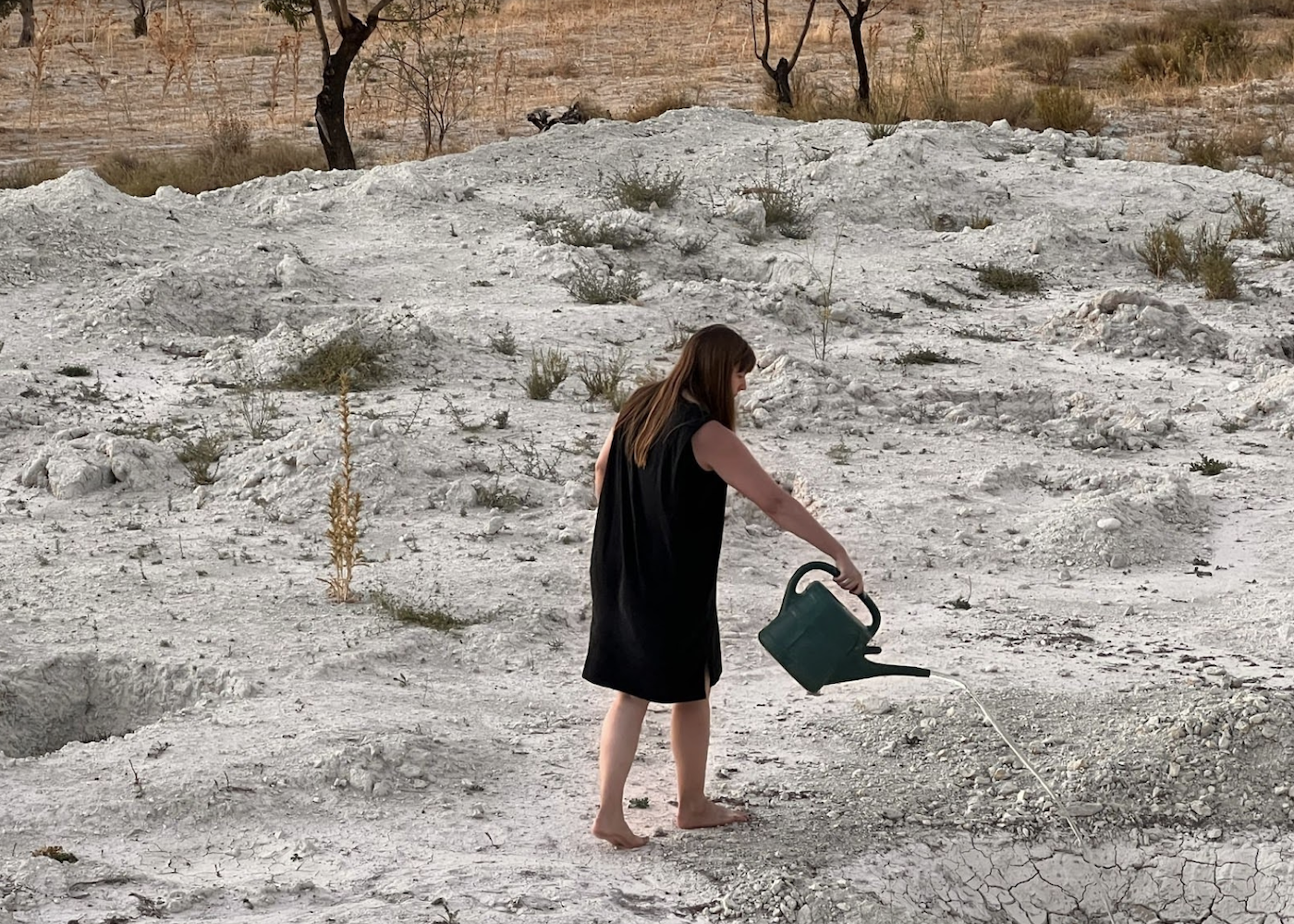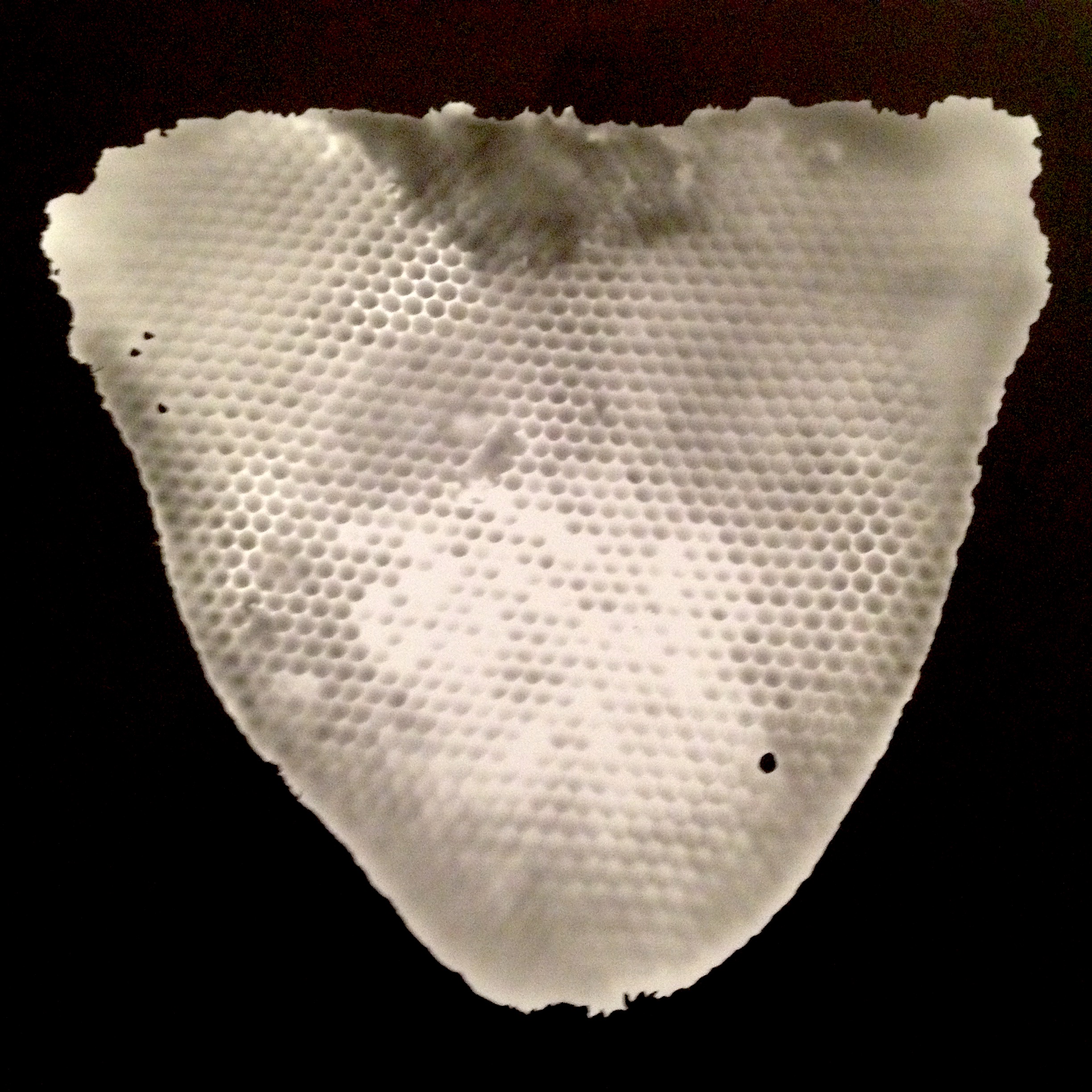
Defence Mechanisms - Exhibition
In this solo exhibition of photographs and mixed media works on paper, Carrie Foulkes explores notions of defence, taking inspiration from three sites: the sea, the desert and the garden. The show brings together new and older pieces that represent the artist’s abiding interest in the meeting places of bodies, architecture and the living world.
Reflecting on the myriad ways in which plants protect themselves, Defence Mechanisms presents portraits of Mexican cactus, Suffolk foxglove and Spanish desert thistle. These are viewed in dialogue with a picture of a coastal nuclear power station’s cooling apparatus. Beach pebbles are gathered in the arms of a figure that merges with the shoreline. Anonymous hotel room interiors become symbols of contemplation and refuge.
Working with analogue photography, drawing, painting and collage, the artist considers the interconnectivity of internal and external structures, viewing the image as a conduit between the material and intangible, conscious and unconscious spheres. Her work with paper echoes the barbs and bright toxicity of flora.
Autobiographical strands are woven throughout the exhibition, positing the making of images as a strategy of self-defence and method of survival.
On the autumn equinox, 23rd September, the artist hosted a Live Night with literary contributions from invited guests, the creative community being another vital source of sanctuary and support. The event featured poetry and readings by JD Howse, Zelda Solomon, Mischa Foster Poole, Nadira Clare Wallace, Jennifer Lucy Allan and a performance by Carrie Foulkes with improvised musical accompaniment by Lucy Tasker. The performance, Sunflower Hospice, was conceived as a funeral celebration for the summertime. The audience participated in a procession and ritual burial of four sunflowers tended by the artist from seedlings to old age over the previous months.
Unholy battered old thing you were, my sunflower O my soul, I loved you then!
Allen Ginsberg, Sunflower Sutra

A Celebration of Georgian Poetry and Music
On 5th May 2023 I hosted a celebration of Georgian poetry and music at St Ethelburga’s Centre for Reconciliation and Peace in Bishopsgate. The evening featured a performance of polyphonic singing by London’s Georgian choir Maspindzeli, the launch of a new translation of poems by Tbilisi poet Lia Sturua and a discussion with the translators Natalia Bukia-Peters and Victoria Field.
Produced with support from Arts Council England, the Writers’ House of Georgia and the Embassy of Georgia to the UK.
Image: From the project " I Am Georgia - მე ვარ საქართველო" by Dina Oganova www.Dikarka.Ge

Uncivilised Paradigms
In 2022 I was one of fifty participants from thirty-nine different countries that were selected to take part in DE.a.RE. Uncivilised Paradigms, a free online course that embarked from socially engaged practices, New Genre Public Art, critical pedagogy and activism, in dialogue with contemporary artistic practices.
Promoted and developed by the international association BJCEM-Biennale des jeunes créateurs de l’Europe et de la Méditerranée and co-funded by the European Union.
I was one of five artists chosen by the committee to receive an award and an invitation to present my work at the final conference Study Day. The conference took place in November 2022 at Fondazione Sandretto Re Rebaudengo, Turin, Italy.
I shared a presentation called
Bees - Bodies - Buildings
as part of the following panel:
Building Critique, Making Space for Change, Repairing the World: Agency and Care in Architecture
curated by Svetlana Racanović
With the participation of Sonja Dragović, Marie Hervé, and one fellow of Uncivilised Paradigms: Carrie Foulkes
My talk explored the intersections of human and environmental health and the politics and aesthetics of public space.

Tending
Site-specific performance, Joya: arte + ecología, Spain, 2022
During a residency at Joya, a centre for art and ecology in Andalucía, I developed a performance in response to the local terrain. I presented the piece in the late afternoon, in the golden light preceding dusk. The sole instructions to the audience were to keep the silence and to follow me at a distance. When I started walking, this marked the beginning of the performance.
We walked through an olive grove and into a pale field where there were many holes dug in the ground. I’d been struck by these hollows during my daily walks. They had been dug in anticipation of a mass tree planting endeavour due to take place later in the autumn. Little piles of dusty earth sat beside each hole. They were reminiscent of graves. My performance responded to the dual nature of these cavities as sites of potential growth and of death and loss. They were to be understood as both wombs and tombs.
Tending was informed by the saying: a wise person knows they’ll never sit in the shade of the tree they plant. I intended to create an image of a gardener tending the soil in which one day they will be buried. The performance evoked the notion of intertwined forces of living / dying and symbolised a commitment to action in the face of climate crisis, however absurd or futile.

Generous emptiness: sculptural and architectural encounters
Artist talk, The Posthumanities Hub & The Eco- and Bioart Lab Hybrid Seminar, Linköping University, Sweden, 2022
This talk pondered different kinds of ‘emptiness’ and their potentialities. As a way into thinking about some relevant themes, I introduced the Sun Hive, exploring the hive’s material and conceptual aspects and how it symbolises a certain kind of relationship between humans and honeybees. Unlike many other forms of bee box that already have frames installed inside them, the Sun Hive provides a colony with a primarily ’empty’ space in which to build their comb, contained by a form that reflects and honours the bees’ natural preferences. The hive is imbued with an ethos of generosity, love and respect rather than of control.
Thinking about the Sun Hive enabled a consideration of some of the meaningful and generative ways in which an artistic practice can meet with a scientific method of observation in an ecological context. We also looked at spatial sculptural/installation practices as transformative sites in terms of human health and wellbeing. I narrated embodied encounters with artworks and the ways in which these resonated and provided support during a time of bereavement. The talk closed with a reflection on some of the ways in which built environments can be conducive to contemplative states, drawing on examples of remarkable public spaces such as the Kamppi Chapel – “the chapel of silence” – in Helsinki, and contrasting this with the prevalent strategy of ‘hostile architecture’ in urban design.
